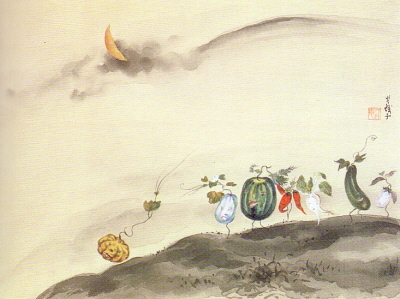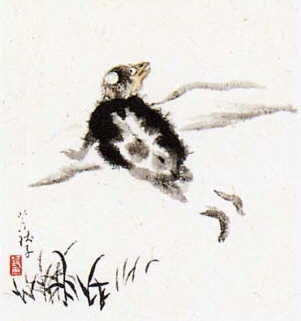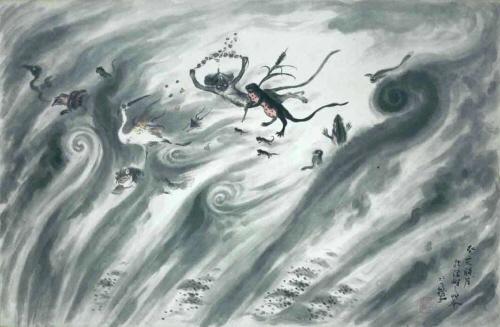Biography of Japanese Painter
Ogawa Usen (1868 - 1938)

Usen was born in the last year of the Tokugawa Shogunate at the official
residence of Ushiku Domain in Edo (present Tokyo) as a son of Samurai.
His real given name was Mokichi.
Though, as the Abolition of the Han (domain) system in 1871, Ushiku Domain
disappeared.
So, Usen's father decided to become a farmer.
In 1881, Usen started studying Western-style painting under Honda Kinkichiro.
In 1887, he entered a newspaper company (The Choya Shinbun) with recommendation
of Ozaki Yukio.
His job was to draw illustrations and manga.
Later, Usen made up his mind to become a full-fledged Japanese-style painter.
However, in 1893, Usen's father gave him an order to come back to Ushiku
of Ibaraki Prefecture and engage in farming.
After this, Usen kept painting with farming.
He depicted farmers in work, living objects near water and also supernatural monsters in Japanese folklore.
Especially, he drew paintings whose subjects were Kappa (river-child, legendary
creature).
Usen also flourished as a Haiku poet.
In 1915, he established the Sango-Kai with Kawabata Ryushi.
Yokoyama Taikan recognized his talent, therefore, Usen became a member
of the Nihon Bijutsu-In (The Japan Art Institute) in 1917.
In 1935, Usen became an advisor of the Imperial Art Academy.




